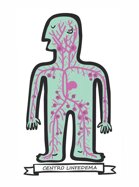UPPER LIMB LYMPHEDEMA AFTER MASTECTOMY
Although I treat all types of lymphoedema, I would like to focus on upper limb lymphoedema in this context. This post-surgical occurrence can follow breast cancer treatment, significantly affecting the quality of life for many patients already struggling with the overwhelming psychological impact of the disease. Breast cancer is the most common cancer in women and has the highest social and emotional impact. For this reason, it is essential to ensure a smooth care pathway, free from avoidable complications, through correct prevention and early intervention by qualified professionals.
Despite the utmost precision and a conservative approach, breast cancer treatment often includes the removal of one or more axillary lymph nodes (sentinel lymph node biopsy and lymphadenectomy) or their exposure to radiation therapy, which may disrupt the lymphatic pathways, resulting in lymphoedema affecting the arm.
Onset of Lymphoedema Post-Surgery
The onset of secondary lymphoedema after breast cancer surgery varies among patients and is influenced by several factors. Lymphoedema may appear immediately post-surgery (in 21% of cases), following radiotherapy (in 47% of cases), or after other triggering events such as trauma (14% of cases), injections (10% of cases), and accidental injuries (5% of cases). On average, lymphoedema develops 6 to 14 months postoperatively, but cases have been observed many years after surgery. Reports indicate that 73% of lymphoedema cases occur within the first year post-surgery, rising to 97% within four years.
Prompt Management and Surgical Options
Upon diagnosis of lymphoedema, it is crucial to modify lifestyle habits and consult an expert to initiate the most suitable conservative therapy for each patient. However, considering surgical intervention promptly is equally important if the patient does not respond to medical treatments, as earlier treatment often yields more effective results.
Types of Surgical Interventions
Surgical techniques are reserved for cases that do not respond to medical treatment and are categorised as either Ablative or Physiological. The choice of technique or combination of techniques is determined based on the consultation, patient discussion, and results from lympho-MRI, a preoperative examination that provides a direct view of the type and severity of lymphoedema. A personalised therapeutic plan will be established for each case to achieve the highest level of care.
Ablative Surgical Interventions
These focus on removing pathological tissue to reduce the weight and size of affected areas.
Modified Liposuction: Generally reserved for cases where the affected areas are primarily composed of fibrotic tissues (known as lipoedema). This technique enables selective reshaping while preserving competent lymphatic pathways, making it ideal where physiological techniques are less effective. It can be combined with other ablative and physiological interventions to achieve more targeted and comprehensive care.
Reduction Surgery: Typically reserved for severe cases of lymphoedema involving extensive fibrotic tissues. The primary goal is to alleviate issues related to the size and weight of the affected limbs, significantly improving the patient's quality of life. It also enables selective reshaping of unresponsive areas and facilitates the activity of remaining competent lymphatic vessels. This approach is especially beneficial when combined with physiological interventions (autologous lymph node transplantation and lymphatic-venous bypass) or liposuction.
Physiological Surgical Interventions
These aim to reconstruct competent lymphatic pathways, allowing excess lymph to drain from the affected areas. These sophisticated procedures are performed using super-specialised techniques under an operating microscope.
Lymph Node Transplantation (ALNT - VLNT): Reserved for cases with hypoplastic, absent, or disrupted lymph nodes due to iatrogenic, traumatic, or post-infectious causes. The procedure involves autologous transplantation of a tissue unit, known as a flap, containing lymph nodes. The most commonly used donor sites include the lateral cervical, dorsal, and inguinal regions. Transplanted lymph nodes not only promote the reabsorption of excess lymph but also help establish a long-term equilibrium through the formation of new lymphatic vessels. This technique is also indicated preventatively for oncology patients undergoing combined oncological and reconstructive surgery, such as breast reconstruction with an abdominal flap after mastectomy, preventing upper limb lymphoedema.
Lymphatic-Venous Anastomosis or Lymphatic-Venous Bypass: Best suited for cases of hyperplastic or hypertrophic lymphoedema, where lymphatic vessels are present but incompetent. The goal is to create multiple bypasses between small lymphatic vessels and subcutaneous venules, diverting lymph flow to the venous system.
Considerations for Patients Undergoing Lymphoedema Surgery
Timely Intervention: The effectiveness of surgical treatment improves the earlier it is performed.
Tailored Procedures: Not all patients are candidates for the same intervention, and an individualised approach is essential.
Multiple Interventions: Combining different procedures often yields more comprehensive results.
Recovery Time for Lymphoedema Surgery
The average recovery time ranges from 4 to 6 weeks. Postoperative discomfort is normal and typically resolves spontaneously during recovery. Around 80-90% of patients return to social activities and office work within two weeks post-surgery. Daily activities can usually be resumed 5-6 weeks after the operation. Starting a rehabilitation programme immediately after surgery, under the guidance of your specialist (Dr Denisa Giardini), is crucial.
Long-Term Results and Complications
Long-term results (beyond 5 years) show a 40% cure rate for upper limb lymphoedema, with over 50% improvement in 24% of cases, and less than 50% improvement in another 24% of cases. In 2% of cases, there is no improvement due to vascular microthrombosis. Outcomes also vary based on the severity of the lymphoedema. The incidence of infections drops to 2%, and physiotherapy can be discontinued in cases of complete recovery.
The main complication, occurring in about 2% of patients, is thrombosis in the vessels supplying the flap. Even with meticulous microsurgical techniques, this risk remains, necessitating close monitoring of flap viability during the first 72 hours postoperatively. If thrombosis occurs, immediate surgery is performed to restore blood flow. Regular short- and long-term follow-up is crucial.
For more information, please visit http://www.centrolinfedema.it, the website of the team of experts I am part of.
FOR INFORMATION AND APPOINTMENTS
Web
CUP





